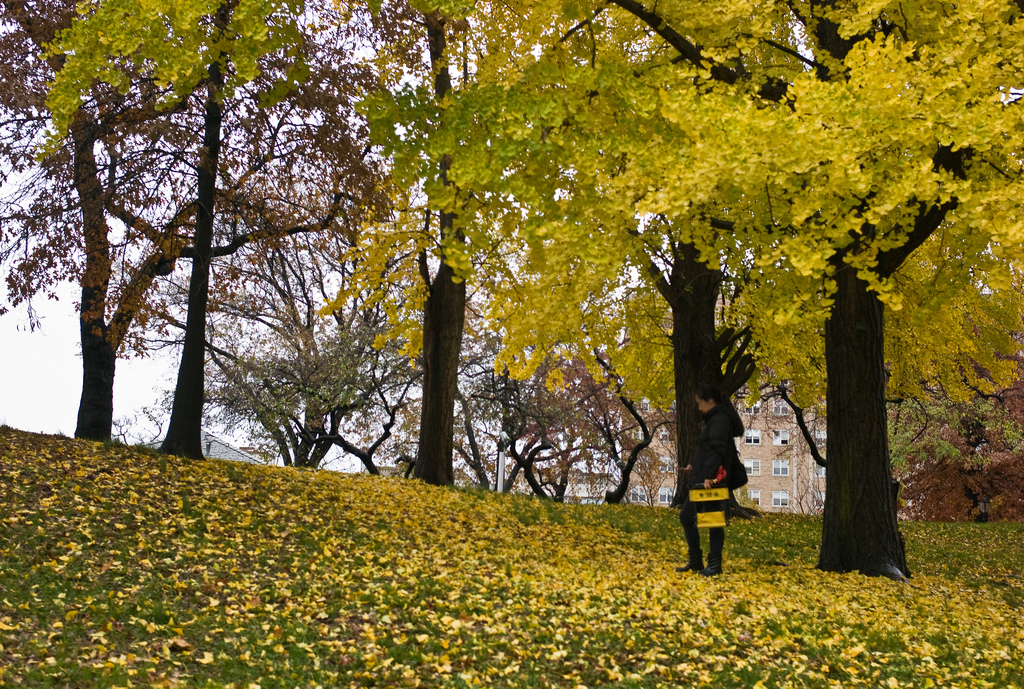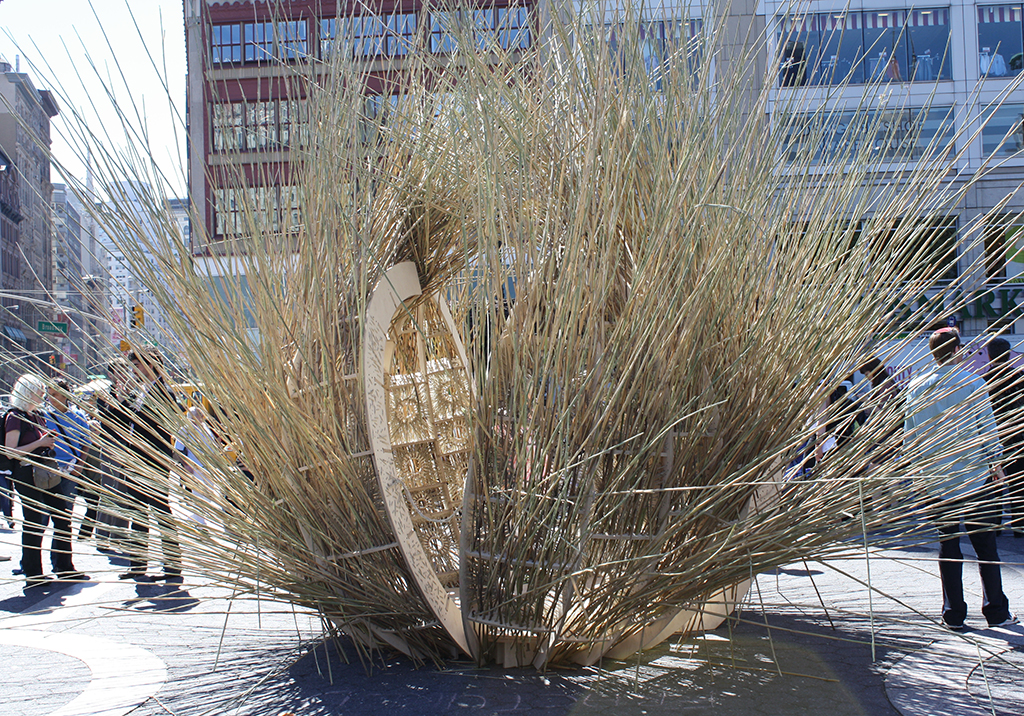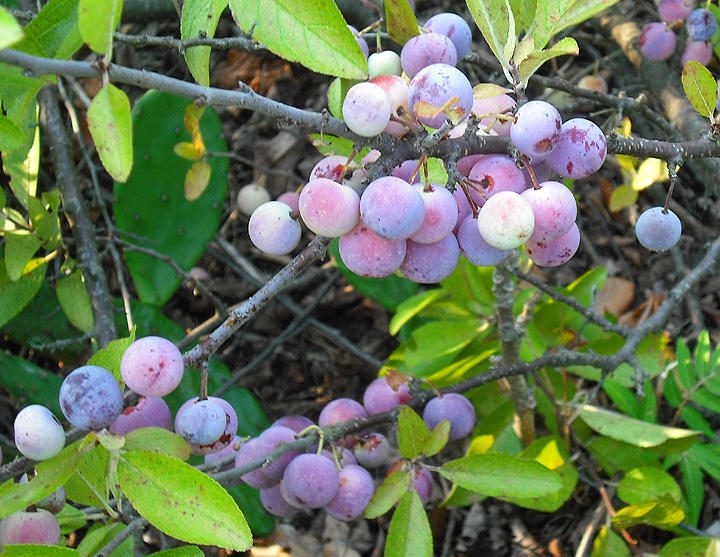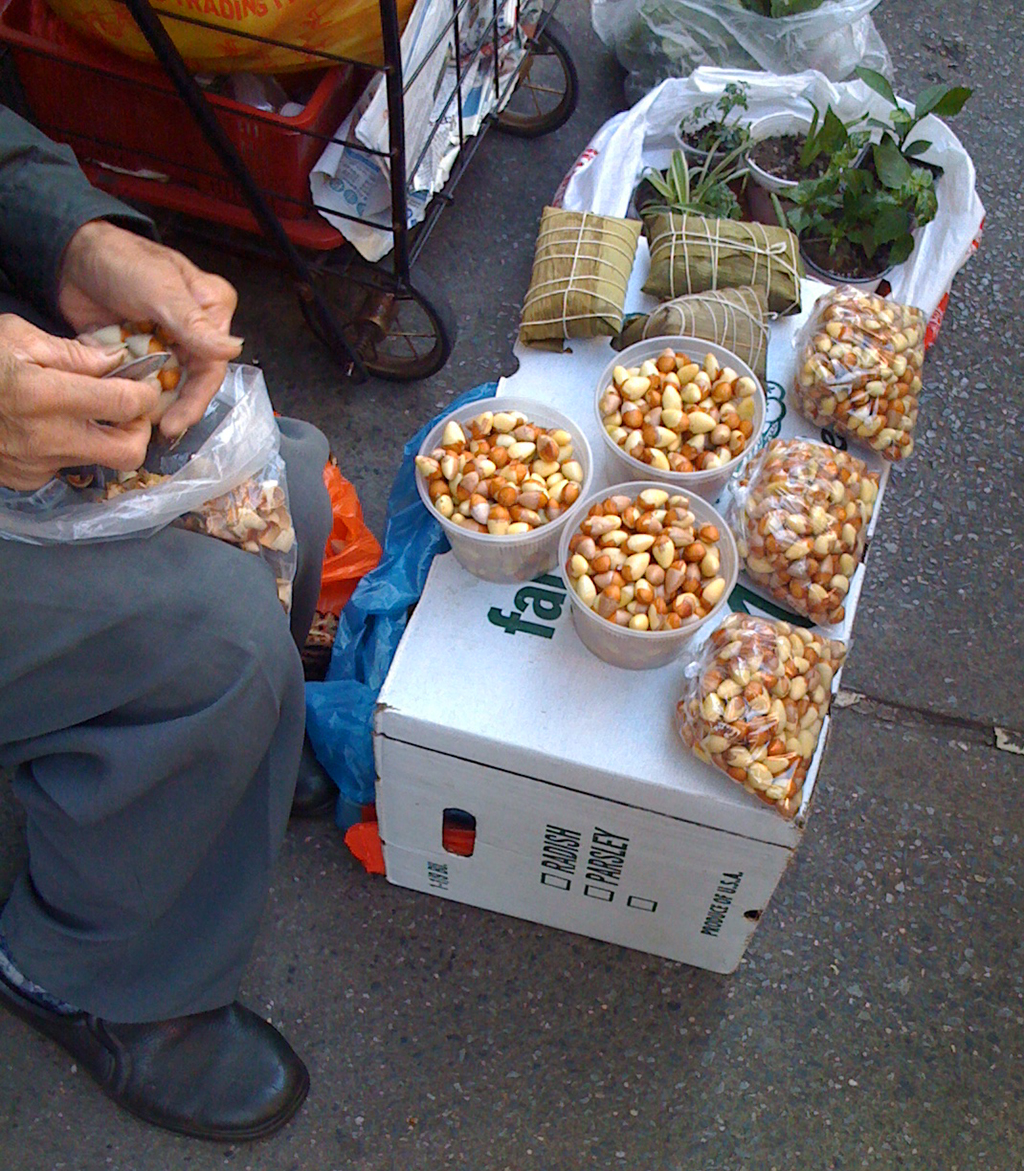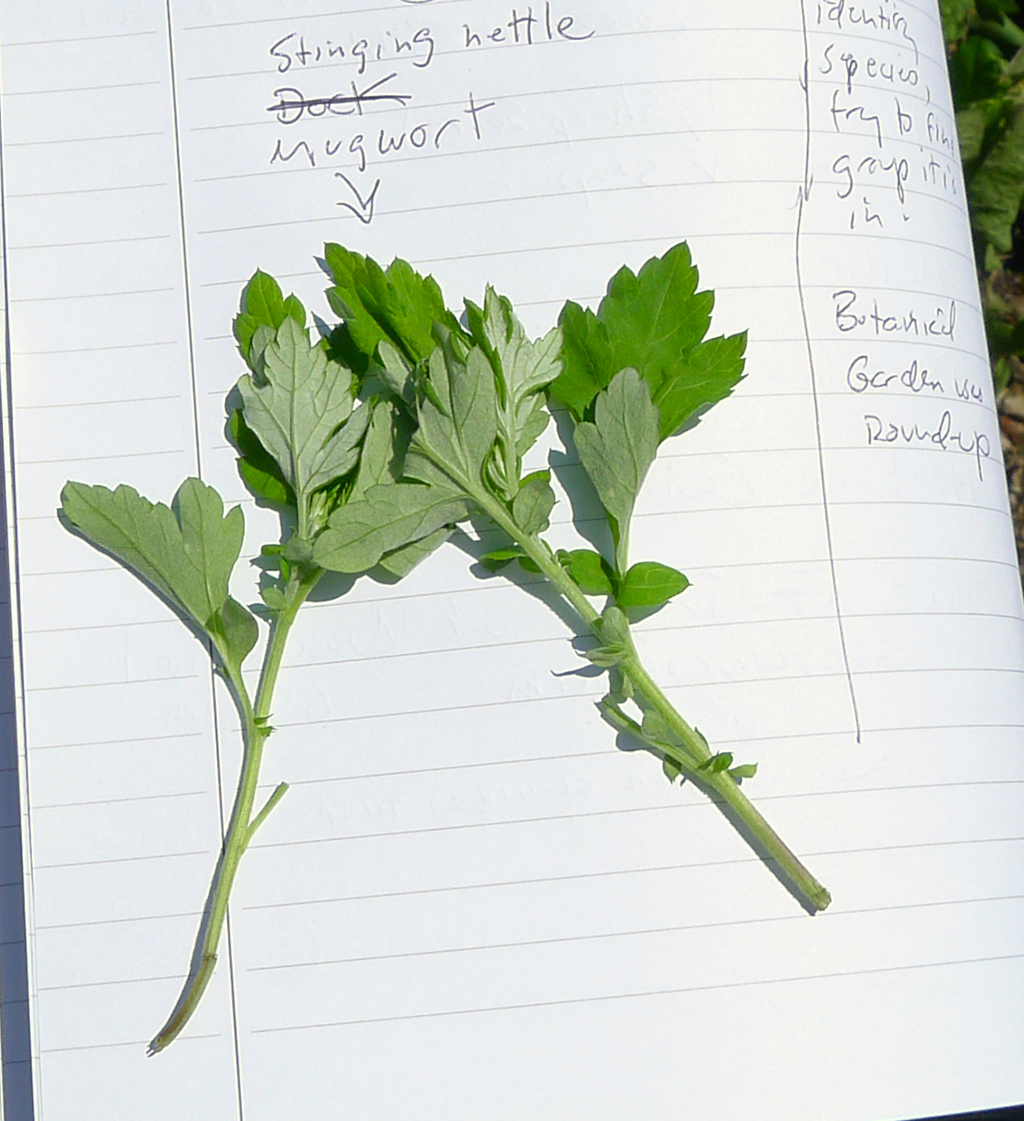
We are celebrating 15 years — and counting — of stories that are deeply researched and deeply felt, that build a historical record of what the city has been.
We are celebrating 15 years — and counting — of stories that are deeply researched and deeply felt, that build a historical record of what the city has been.
My haul on an August foraging tour of Central Park was substantial: sheep sorrel, yellow wood sorrel, lambsquarters, burdock, bitterdock, mugwort, garlic mustard, common plantain, mountain mint, poor man’s pepper, black birch, sassafras, Kentucky coffee tree pods, elderberries, cornelian cherries, and blackberries. While this was an educational and delicious Sunday outing for me, many New Yorkers make foraging for wild edibles a common practice. Precisely who, why, where, and what — as well as the practice’s outcomes — are the realm of Marla Emery’s research.
As a geographer, Emery has studied human use of wild plants and mushrooms for two decades. In two recent studies, she delved into the significance of foraging among different ethnic groups in New York City, documenting an impressive roster of species harvested from parks, cemeteries, tree pits, and anywhere else something grows. Beyond specificities of plants and preparations, Emery’s research also raises questions about our land management policies, and how foraging, which is technically illegal on City parkland, might be integrated into allowable uses of this land to the benefit of both managers and those harvesting New York’s wild bounty. Here, Emery explains the cultural and personal purposes, public health benefits and risks, and potential and pitfalls for land management of urban foraging. Morsels of wild food knowledge also divulged. –J.T.
Tell me about your background and research practice.
I am a geographer in the human-environment interactions tradition, and I’ve been researching human use of wild plants and mushrooms since the mid-1990s. I started in rural environments, but within the last decade I recognized that foraging is not an exclusively rural practice and that we ought to better understand it as urban as well. That launched my investigation into foraging in cities, including New York. I’m also the national coordinator for the US Forest Service’s Native Peoples and Climate Change research program. Wild plants and mushrooms are, of course, extremely important to material and cultural survival for native peoples in the US and throughout the world.
Those studies have specific ethnic and nationality foci, but who do you find foraging in New York more broadly?
By surveying mentions on social media, we know that a lot of people are foraging. And we can safely say that the practice crosses boundaries of all kinds — ethnicity, gender, age, income. That’s not to say that foraging has the same marginal utility for everybody. But when we ask people about their reasons for foraging, we tend to hear similar things across social categories. We do occasionally hear that foraging is important for meeting food needs. More often, we hear that people are motivated by the flavors of the food, what they perceive to be its healthful qualities, and the way foraging helps people maintain food-based traditions in their family or from their culture. There’s also a very interesting performative aspect to foraging, then preparing and sharing the food. People really want to display their expertise and skill in finding a special food that’s not readily available in any other way and then preparing it in ways that are appealing and interesting.
What gets foraged in the city?
We’re still analyzing data, but we have primary documentation for well over a hundred species being harvested in the city. An overwhelming number of those are weedy and grow spontaneously, propagating themselves around the city. In the Chinese community the two most commonly mentioned foraged items are gingko nuts and mulberries. When gingkoes are planted as street trees, the Parks Department hopes it is planting males. But it’s hard to sex a gingko tree when it’s little, and some of them turn out to be females, which bear a smelly fruit with a prized nut inside. We’ve been told by a few folks that in gingko nut season they never leave the house without latex gloves and zip lock bags. Mulberry is a species that was horticultural but has taken to reproducing itself. It’s not particularly loved by people committed to native species, but there are an awful lot of people who value those fruit, particularly in the Chinese and Chinese American community
Both gingko nuts and mulberries are consumed as food, but it’s not logical to make a hard distinction between food and medicine, particularly in the Chinese community. What you consume is regarded as a basic component of supporting your health. We often hear the quote “let food be thy medicine and medicine be thy food.” That said, some species are foraged specifically for their medicinal value. In both the Mexican and Chinese/Chinese American studies it was quite striking that parents, particularly mothers and grandmothers, talked explicitly about foraging things to support their families’ health. That might include both things used to make remedies for particular ailments and things sought out to support a healthy diet.
In the Mexican community, the most frequently mentioned foraged species is epazote. There are many parts of Mexico where you wouldn’t cook beans without it. The next most frequently mentioned is mint. And then you have purslane and dandelion, which are on most everyone’s list, across cultures. Otherwise, the materials foraged by these two communities are, by and large, very different. Many foraged goods are primarily related to traditions, and the foods in Chinese festivals and celebrations are quite different from those in Mexico.
Did you come across species in these studies that were new to you as foraged materials?
It would take a lot to surprise me, but one species that I just wouldn’t have thought about before is honeysuckle flowers, which are used in tea by the Chinese/Chinese American community. On the Mexican side, I had not appreciated that there is amaranth, the staple food of Central Mexico, growing all around New York City.
What are the public health benefits and risks of foraging?
People in every community have articulated clear emotional benefits. Foraging gives them a sense of peace; it connects them with nature. A few people have explicitly said, I struggle with depression and foraging makes me feel less depressed. For older immigrants who can’t work or communicate in English, contributing to a family meal or supporting a family member’s health gives them a sense of purpose. You have to walk to forage, so it’s motivation to be physically active. The micronutrients available in many of these foods have great health benefits, especially for people with limited access to fresh produce who use foraging as an antidote to food deserts. One person that we interviewed created a small guide to foraging in his neighborhood to distribute to local homeless individuals.
On the down side, there’s concern of contamination. Dog waste is frequently mentioned, as are chemicals, either residual from industrial processes or herbicide and pesticide applications. People are also worried about runoff from roads, and for good reason.
We’ve begun a second pilot study to test foraged plant materials for contamination, starting with heavy metals like lead and cadmium. They might be present in the soil, but different plants take up soil components in different ways; they even get deposited in different parts of a plant. For our first pilot in 2012, we tested three species for heavy metals to see if there was anything worth following up on, and indeed it looked like there was. But we realized when we thought more about our results that, for example, we didn’t wash those dandelion roots before we tested them, and that’s not what people are really consuming. They scrub and roast dandelion roots, then prepare them as you would coffee or tea. So if we want to know potential exposure, we need to first understand how the material is processed and consumed, then test that.
Our colleagues at Johns Hopkins School of Public Health have added to our thinking — dosage matters, frequency matters, and who you are matters. Exposure to lead is much more consequential for small children than it is for adults. We made the connection with the folks at Johns Hopkins after they looked at risk exposure from urban gardening and found that the primary vector for exposure to heavy metals was inhaling or ingesting soil while gardening, not so much consuming the stuff that’s grown in the soil. Smokers’ exposure was also higher because they constantly put their hands up to their mouth. So that’s the direction we are hoping to take this work — to be able to speak in a more thorough, systematic, and nuanced way about what risks of foraging might be.
Where in New York does foraging occur?
The short answer is pretty much anywhere a plant or a mushroom will grow. Parks are obviously a prime location because so many of these weedy species take root in their unmanicured, interstitial parts. Then you have street trees and street tree pits, public rights-of-way, and institutional grounds with green spaces, like botanical gardens.
We spoke with multiple people who forage in cemeteries. Some people said they forage there because the grounds are never sprayed with herbicides. Another person said she never forages in cemeteries because they’re sprayed. My primary partner on this work, Patrick Hurley, and I spent a number of days walking Queens cemeteries to understand how we could hear those two apparently contradictory things. After a few days, we completely understood. The turf in the part of a cemetery with active burials is kept very nice. But there is an abundance of very old cemeteries in New York City. Areas where early burials took place are relatively unmanicured, and there’s a great diversity of species, so you know that there’s no broad leaf herbicide being applied. In one cemetery where the headstones all showed burials in the mid-1800s, I could easily identify half a dozen species that were either food or medicine in one square meter of ground.
What are the regulations around foraging in New York City and how do those rules differ across jurisdictions?
Foraging in the City parks system appears to be unequivocally outlawed. The Parks Department is tasked with maintaining these green jewels inside the city, and they take that job seriously. So there’s an understandable anxiety about everyone heading into parks to pick things and take them home. But the results depend on how many people are picking, what they’re picking, and where they’re picking it.
At the same time there’s a great desire in the Parks Department to provide for the people of the city. We’ve heard from a number of folks in the department that if there’s a way to honor both those missions, then that’s something they’re interested in.
Although it’s technically illegal, Parks Department staff interpret the rules in various ways. A few people say if the material is already on the ground, that’s okay. That would apply to gingko nuts that have already fallen (that the department would also rather not have to deal with). We’ve had others say that you can’t remove anything on the ground or on a plant. So while it appears clear cut at first blush, there’s actually some lack of clarity within the rules.
There’s always the question of what the rules are on the books, what the rules are in practice, and what foragers believe is ethical or moral. We’ve had a number of people in the Chinese community express a strong ethos of not wasting — that the Parks Department is scooping up all those gingko nuts and throwing them away is to them terribly wasteful. So there’s a general judgment that if something was not intentionally cultivated and no one is planning to use it, or if it’s in the public right-of-way, foraging is ethical.
In terms of people harvesting from residences, stoop gardens, and that sort of thing, all the standard rules of private property apply. We don’t yet know what the rules are in cemeteries. The folks at Gateway National Recreation Area were really generous in meeting with us early on, and they’ve done some really innovative things around foraging. They actually post on their website when the beach plums are ripe. They’ve invited local Jewish temples to harvest phragmites — an invasive reed found in wetlands, which they want to get rid of — for building sukkahs during Sukkot. How cool is that? That’s a case where a land management agency has said, yes, in some cases we allow foraging and even encourage it.
How does foraging link-up with larger food systems? Is the variety of foraging you’ve seen in New York connected with commercial food systems in any way?
Foraging is certainly linked with the growth in urban gardens and urban farms. I’ve given a few talks recently to argue that if gardeners and farmers include these foraged, “wild” species in their conception of food, the physical and temporal spaces in which urban food production takes place can be greatly expanded. People are always pulling up chickweed in their gardens, which is a fabulous edible with tremendous nutritional value. That urban garden or farm is already producing many more food species than it realizes; you just have to see them. The time period for food production is also greatly extended, because foraged species are often available far earlier in the spring than any annuals you could plant and produce much later into the year.
Now whether it’s reasonable to think of that at a commercial scale is another question altogether. My gut instinct is that it is not beyond a very local market scale. We do know that some foraged materials, particularly gingko nuts and mugwort, are being sold in New York City from pop-up produce stands.
What implications might your research have for how the City should manage its land?
Urban foraging very clearly contributes to physical, social, and cultural well-being and resilience at a time when there is a lot of talk about creating resilient cities. Our research provides an opportunity to open up a more nuanced conversation about what foraging really is and whether or not it can be welcomed into urban green space management and rules as a component of creating such cities.
We see opportunities to have that conversation, and Parks Department employees have told us that’s a conversation they’re interested in, especially when they see that a majority of foraged species are weedy. If you wanted to eradicate mugwort — an invasive weed that’s used for food and medicine — you could enlist the cooperation and participation of foragers who would be happy to pick the stuff and take it home. There’s potential for actually spreading the thing that you’re trying to get rid of by broadcasting seeds inadvertently, so it’s not a simple fix, but it does highlight the opportunity for partnership.
People who forage also greatly value the city’s green spaces, so they’re potential allies. They’re out there observing, in some cases very carefully, throughout the year. They have information that could be quite useful in managing those spaces.
There are also opportunities for designing multifunctional urban green infrastructure in order to provide food and medicine. My colleague Matt Potteger has worked with his students and the Bronx River Alliance on designing edible ecologies for the Bronx River Corridor that require few resources to establish and maintain. The organization ioby has also been talking about establishing a food forest in Brooklyn.
Do you forage yourself?
A little bit. This morning I was out picking berries. I am very fond of milkweed flower buds; they’re like broccoli, only way better. And spring would not be complete for me without several meals of dandelion greens. If you’re not vegetarian, I highly recommend bacon in the mix.
The views expressed here are those of the authors only and do not reflect the position of The Architectural League of New York.
